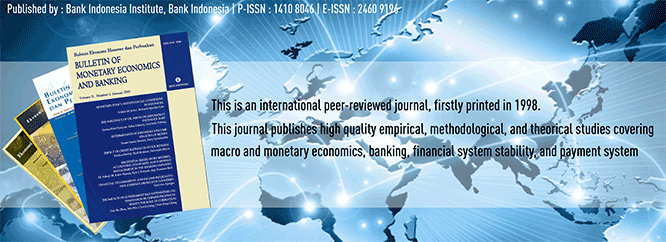
Document Type
Article
Abstract
We test whether the Indonesian foreign exchange market is efficient. Since empirical evidence has been inconclusive, we employ a new generalized autoregressive conditional heteroskedasticity–based unit root test to examine the Efficient Market Hypothesis (EMH). The advantages of this model are that it accommodates two endogenous structural breaks and heteroskedasticity. Tests that account for structural breaks reject the EMH in only 29% of cases. When we accommodate both structural breaks and heteroskedasticity, we find the EMH is rejected in 50% of cases. Finally, we examine the half-life of exchange rates and find that 71% of rates revert to equilibrium within a month.
Recommended Citation
Njindan Iyke, Bernard
(2019)
"A TEST OF THE EFFICIENCY OF THE FOREIGN EXCHANGE MARKET IN INDONESIA,"
Bulletin of Monetary Economics and Banking: Vol. 21:
No.
0, Article 5.
DOI: https://doi.org/10.21098/bemp.v0i0.976
Available at:
https://bulletin.bmeb-bi.org/bmeb/vol21/iss0/5
First Page
439
Last Page
464
Creative Commons License

This work is licensed under a Creative Commons Attribution-NonCommercial 4.0 International License
Country
Australia
Affiliation
Deakin University







